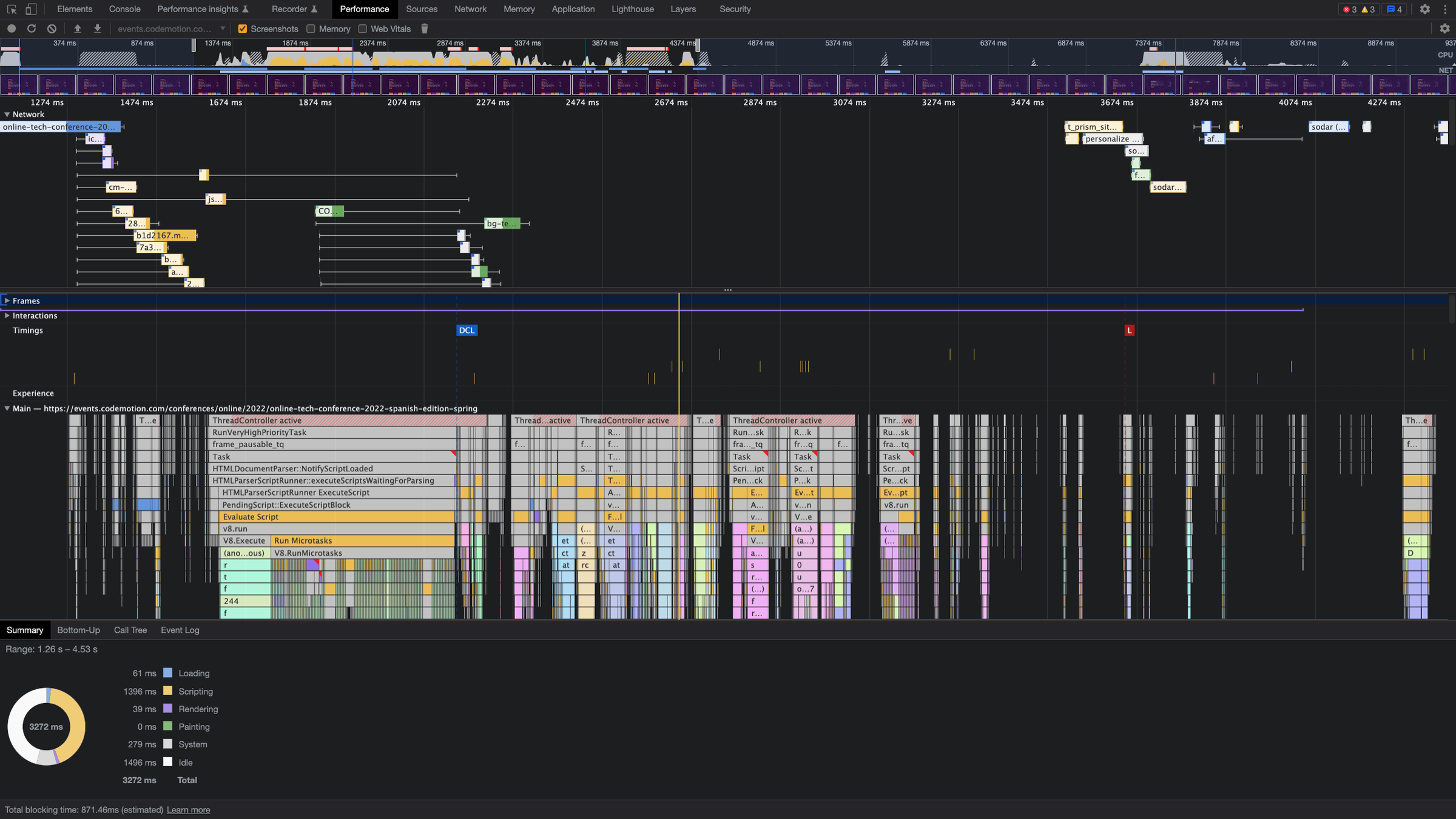
Web Performance Testing

Estela Franco & Joan León
Estela Franco







Joan León





Agenda
1. Web Perf Testing Current Status
2. Lighthouse CI & GitHub Actions
3. LHCI Server & Heroku
4. Key Takeaways

1. Web Perf Testing
Current Status

DEFINITION
IMPLEMENT
DEPLOY
WEB
PERF.
CHECK
TEST
Ideation,
definition, design,
copies, images...
It may include unit testing on local environment.
Implementing a new feature
Automated testing before merge (integration testing, E2E...).
It can be deployed on production or other previous environments.
Once the code is live somewhere, web performance may be tested.

Who checks the web perf. metrics?
DEV?
BUSINESS?
SEO?
USERS?
SEARCH
CONSOLE?

DEFINITION
IMPLEMENT
DEPLOY
PERF.
CHECK
TEST
Implementing a new feature
If this feature degrades the performance...
Spending more time === Spending more money
(and generates a bad UX & DX)
BACKLOG

We can execute manual Lighthouse tests during the development process in local environments but...

Manual tests in local environments
Pros
Cons
- Helps to detect some web performance issues before shipping code.
- Improves the web performance culture.
- Manual work: how many runs per URL? How many tested URLs?
- Local environment === non standard environment

Here's where Web Performance Testing comes into action!

Web Performance Testing
Pros
Cons
- Test config === unified tests criteria.
- Test automation === better DX.
- Cloud environment === standard environment.
- Online results === shareable & available for the rest of the team.
null

Why isn't everybody already doing it?
Lack of knowledge
Lack of web performance culture

2. Lighthouse CI
& GitHub Actions

Lighthouse CI

Automate running Lighthouse for every commit, viewing the changes, and preventing regressions



Lighthouse CI

$ npm install -d -E @lhci/cliLighthouse CI

...
"scripts": {
"start": "serve src",
"test": "lhci autorun"
},
...package.json
Lighthouse CI

module.exports = {
ci: {
collect: {
startServerCommand: "npm start",
numberOfRuns: 1,
url: [
"http://localhost:3000/",
"http://localhost:3000/about",
...
],
},
upload: {
target: "temporary-public-storage",
},
},
};
package.json
Lighthouse CI

$ npm run test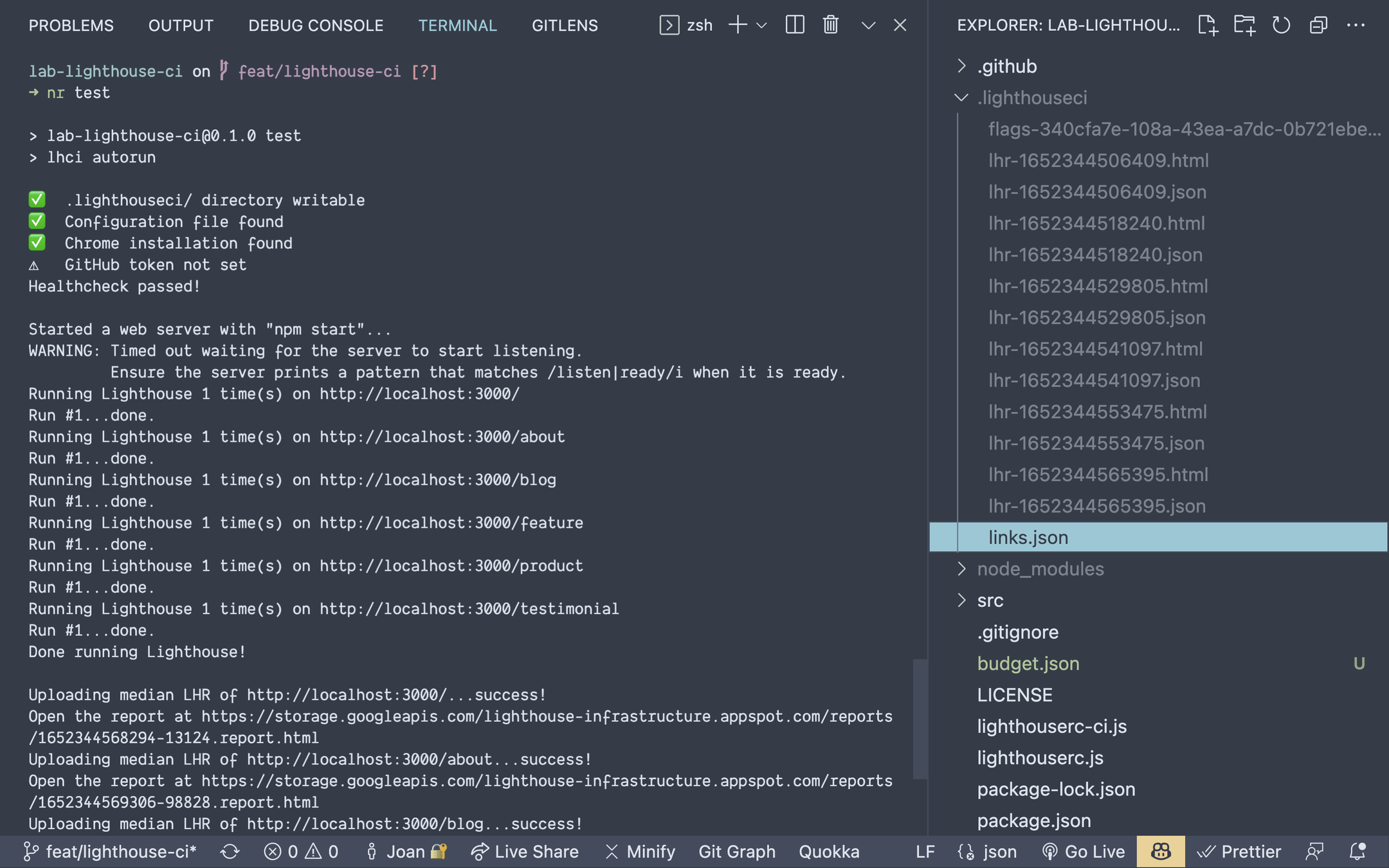
npm run test
startServerCommand: "npm start",
url: [
"http://localhost:3000/",
...
],
upload: {
target: "temporary-public-storage",
},


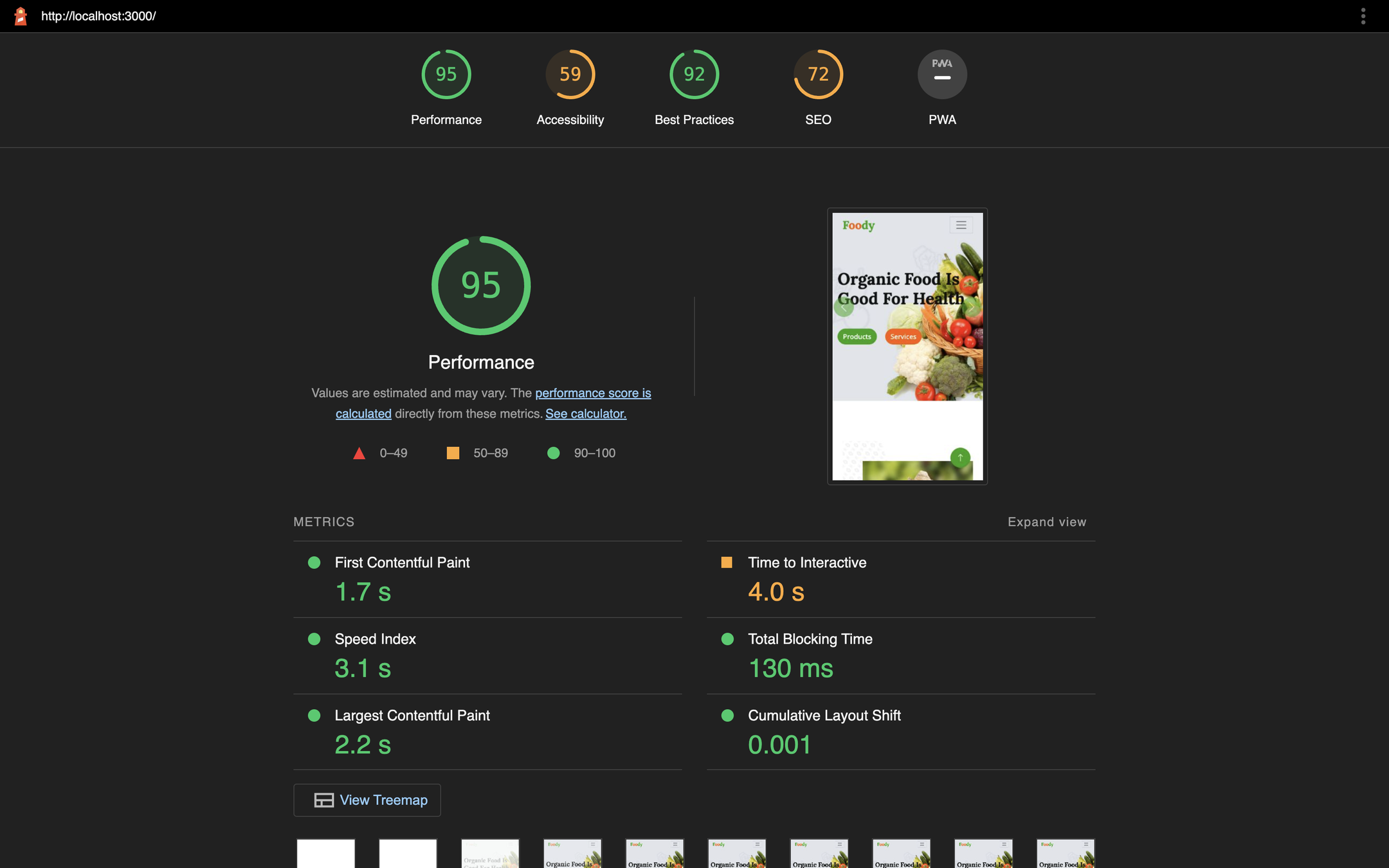
Lighthouse CI

{
"http://localhost:3000/": "https://storage.googleapis.com/lighthouse-infrastructure.appspot.com/reports/1652344568294-13124.report.html",
"http://localhost:3000/about": "https://storage.googleapis.com/lighthouse-infrastructure.appspot.com/reports/1652344569306-98828.report.html",
"http://localhost:3000/blog": "https://storage.googleapis.com/lighthouse-infrastructure.appspot.com/reports/1652344570212-96488.report.html",
"http://localhost:3000/feature": "https://storage.googleapis.com/lighthouse-infrastructure.appspot.com/reports/1652344571280-16057.report.html",
"http://localhost:3000/product": "https://storage.googleapis.com/lighthouse-infrastructure.appspot.com/reports/1652344572338-41994.report.html",
"http://localhost:3000/testimonial": "https://storage.googleapis.com/lighthouse-infrastructure.appspot.com/reports/1652344573304-26039.report.html"
}.lighthouseci/links.json
Lighthouse CI

.lighthouseci/lhr-1652344565395.json
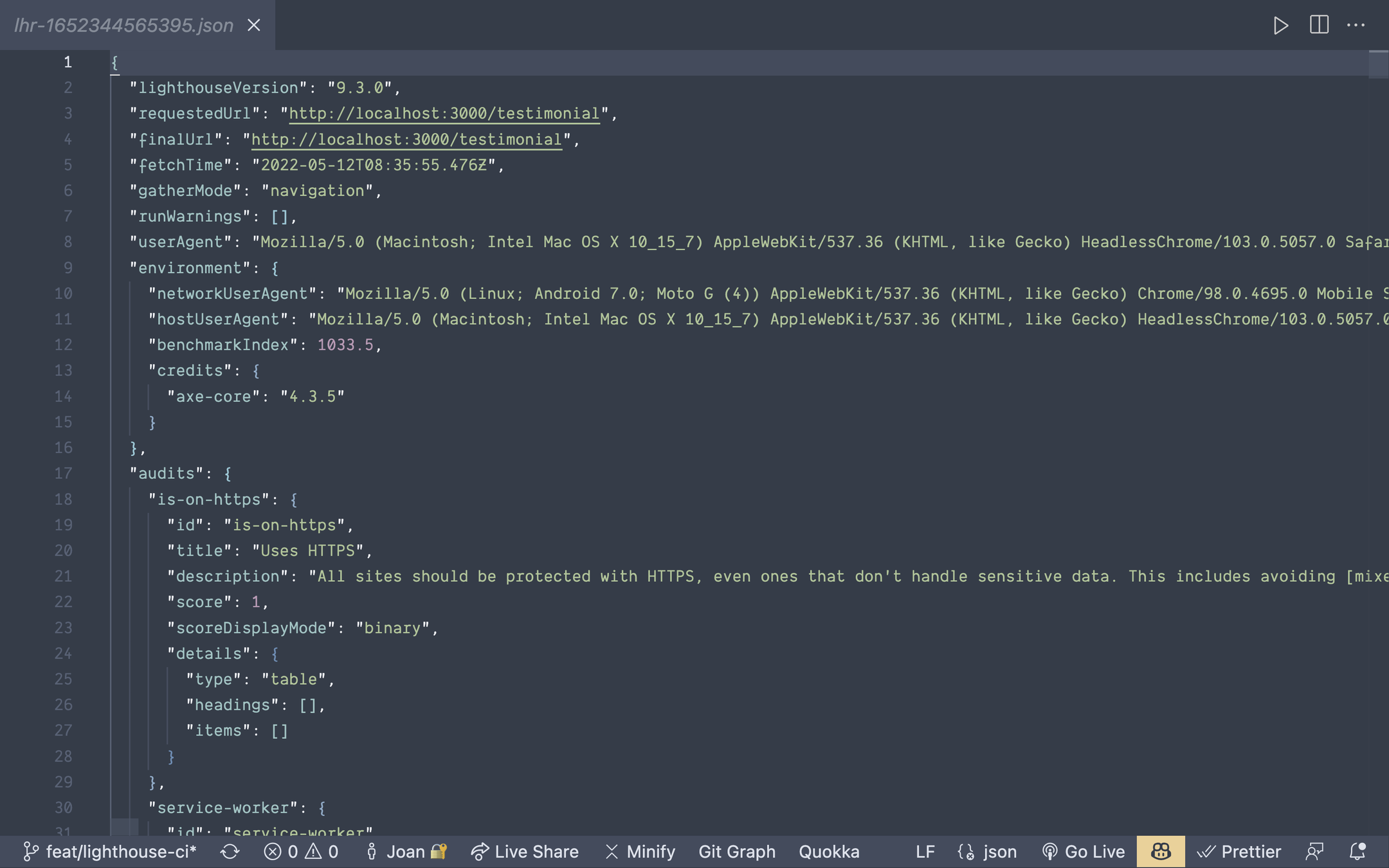

12772
Lighthouse CI & GitHub Actions


Lighthouse CI & GitHub Actions

name: Lighthouse CI
on: [push]
jobs:
lhci:
name: Lighthouse CI
runs-on: ubuntu-latest
steps:
- uses: actions/checkout@v1
- name: Use Node.js 16.x
uses: actions/setup-node@v1
with:
node-version: 16.x
- name: Install dependencies
run: npm install
- name: run Lighthouse CI
run: |
./node_modules/.bin/lhci autorun --config=./lighthouserc-ci.js
env:
LHCI_TOKEN: ${{ secrets.LHCI_GITHUB_APP_TOKEN }}.github/workflows/lighthouse-ci.yaml
Lighthouse CI & GitHub Actions

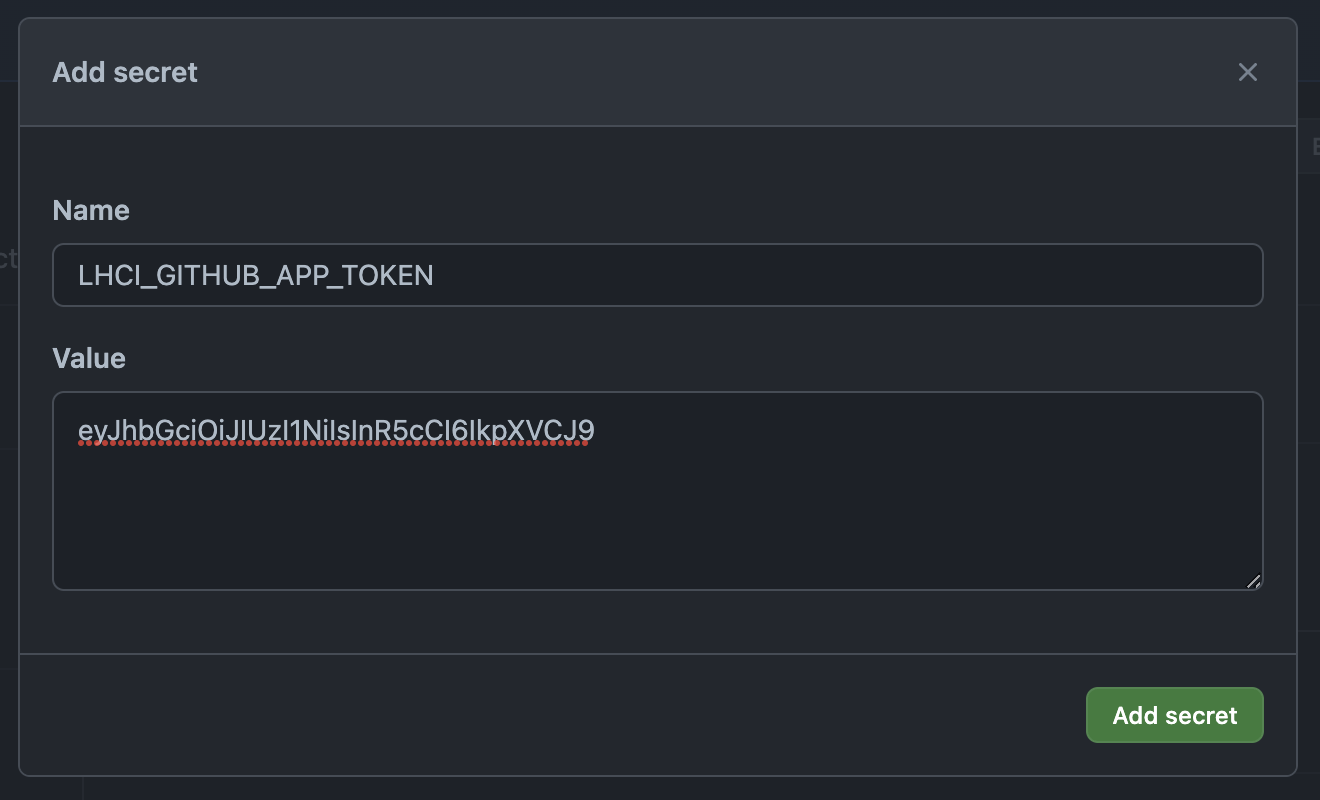
Lighthouse CI & GitHub Actions


Lighthouse CI & GitHub Actions

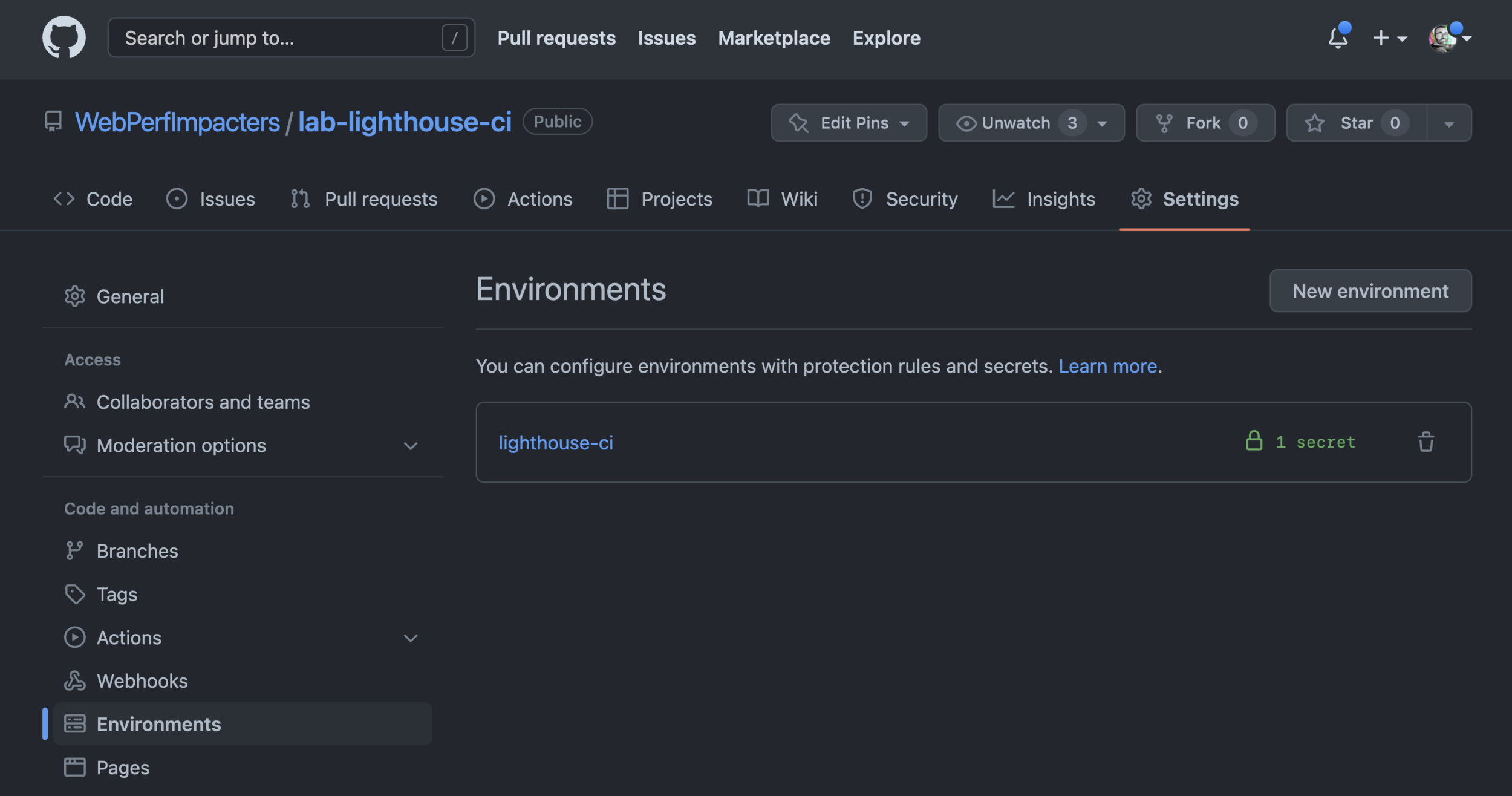
Lighthouse CI & GitHub Actions

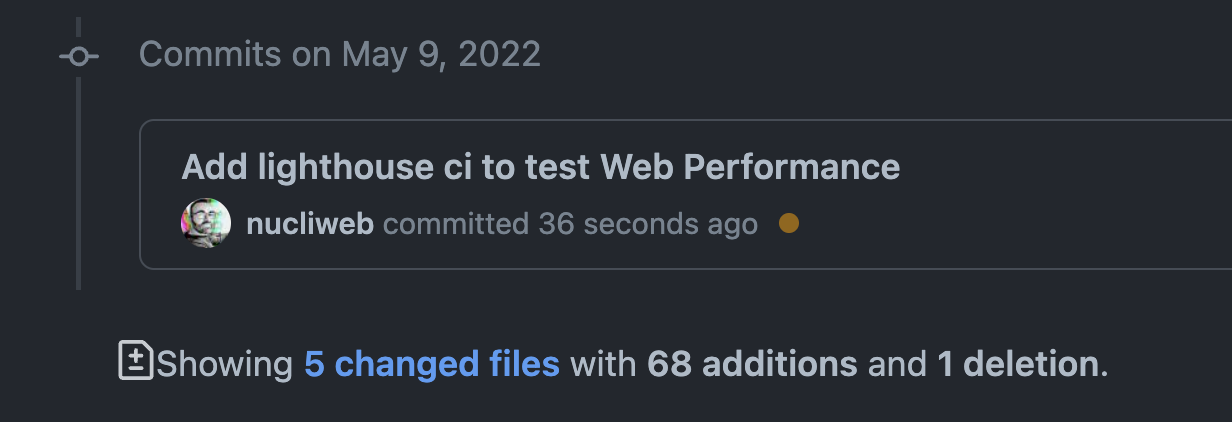
Lighthouse CI & GitHub Actions


Lighthouse CI & GitHub Actions

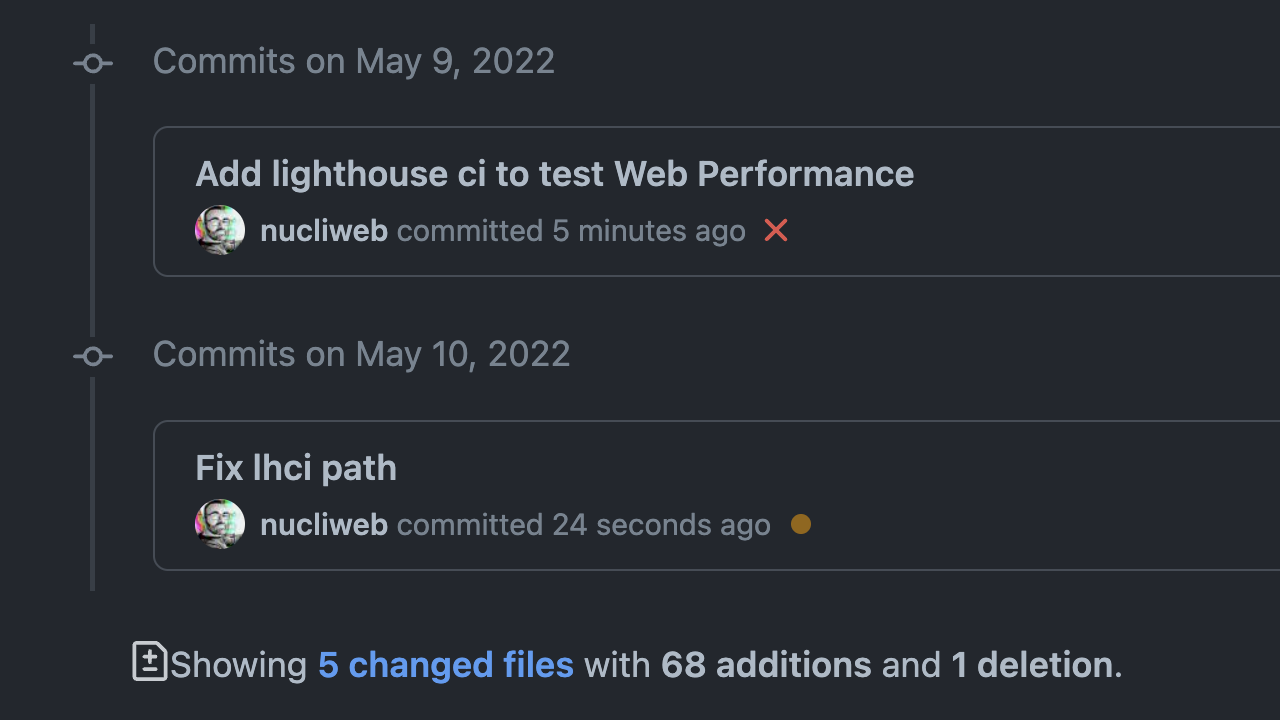
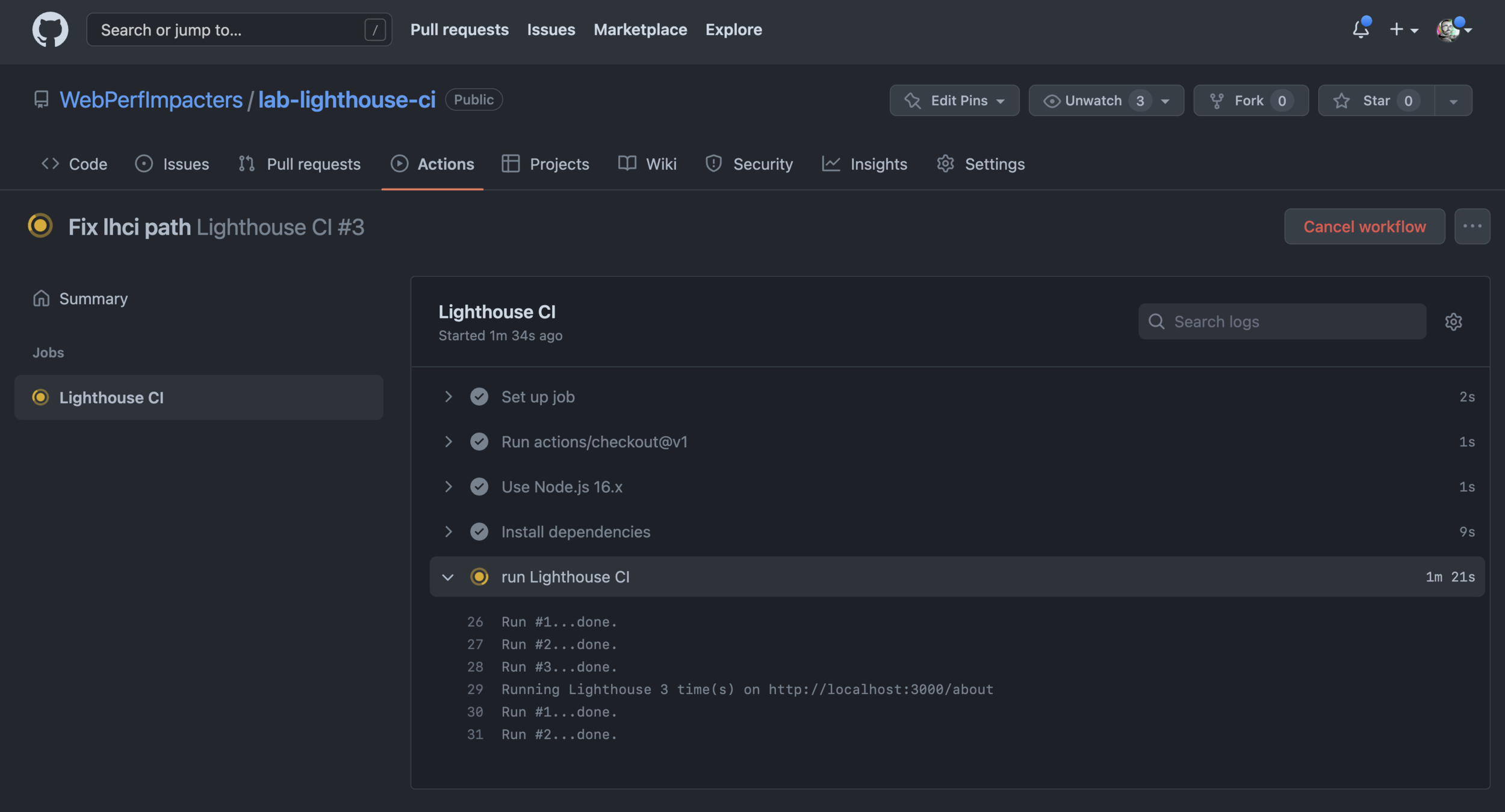

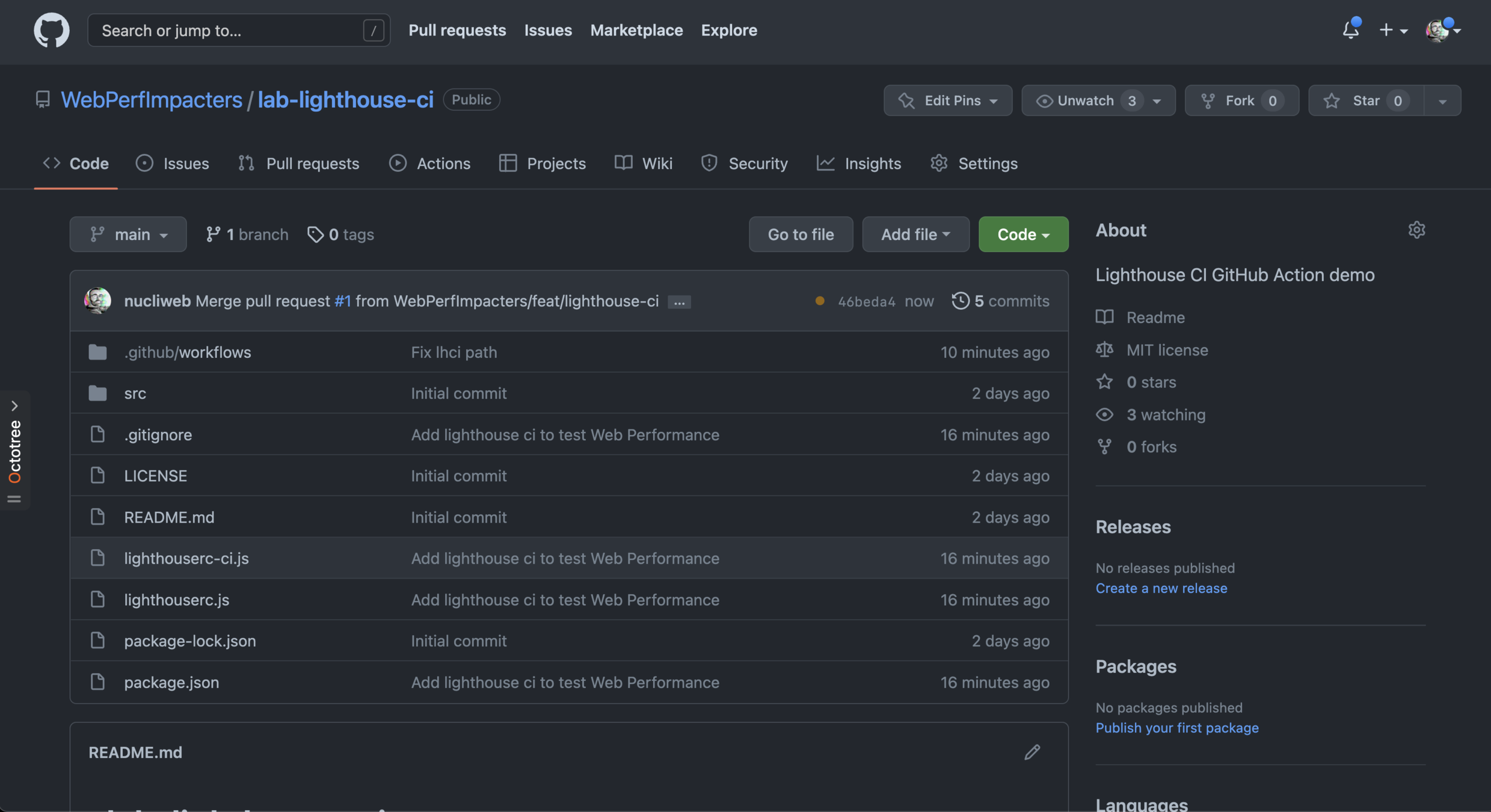

3. LHCI Server & Heroku

LHCI Server
-
Saves historical Lighthouse data
-
Displays trends in a dashboard
-
Offers an in-depth build comparison UI to uncover differences between builds.

LHCI Server



LHCI Server
Requirements:
-
Node v12 LTS
-
Database Storage
(sqlite, mysql, or postgresql)

Heroku
Heroku is a platform as a service (PaaS) that enables developers to build, run, and operate applications entirely in the cloud.



Heroku
1. Create a Heroku account


Heroku
2. Install Heroku CLI


$ brew tap heroku/brew && brew install heroku
$ npm install -g heroku
Heroku
3. Set up your lhci-heroku repo
# Create a directory and repo for your heroku project
mkdir lhci-heroku && cd lhci-heroku && git init
# Setup the LHCI files
curl https://raw.githubusercontent.com/GoogleChrome/lighthouse-ci/main/docs/recipes/heroku-server/package.json > package.json
curl https://raw.githubusercontent.com/GoogleChrome/lighthouse-ci/main/docs/recipes/heroku-server/server.js > server.js
# Create the project's first commit
git add package.json server.js && git commit -m 'Initial commit'
Heroku
3. Set up your Heroku project
# Create a new project on heroku
heroku create
# Add a free database to your project
heroku addons:create heroku-postgresql:hobby-dev
# Deploy your code to heroku
git push heroku main
# Ensure heroku is running your app and open the URL
heroku ps:scale web=1
heroku open
Heroku


LHCI Server
4. Install LHCI CLI
# Install the Lighthouse CI CLI.
npm install -g @lhci/cli
LHCI Server
4. Install LHCI CLI
$ lhci wizard
? Which wizard do you want to run? new-project
? What is the URL of your LHCI server? https://your-lhci-server.herokuapp.com/
? What would you like to name the project? My Project
? Where is the project's code hosted? https://github.com/myaccount/miproject
? What branch is considered the repo's trunk or main branch? main
Created project My Project (XXXXXXXX-XXXX-XXXX-XXXX-XXXXXXXXXXXX)!
Use build token XXXXXXXX-XXXX-XXXX-XXXX-XXXXXXXXXXXX to add data.
Use admin token XXXXXXXXXXXXXXXXXXXXXXXXXXXXXXXX to manage the project. KEEP THIS SECRET!
LHCI Server
5. Create two new secrets on your GitHub repo


LHCI Server
5. Create two new secrets on your GitHub repo


LHCI Server
5. Create a new secret on your GitHub repo
Remember you also need the LHCI_GITHUB_APP_TOKEN


LHCI Server
6. Create a new workflow on your project
lighthouse-ci-server.yaml


LHCI Server
6. Create a new workflow
lighthouse-ci-server.yaml
name: Lighthouse CI Server
on: pull_request
jobs:
lhci:
name: Lighthouse CI Server
runs-on: ubuntu-latest
steps:
- uses: actions/checkout@v3
- name: Use Node.js 16.x
uses: actions/setup-node@v1
with:
node-version: 16.x
- name: Install dependencies
run: npm install
- name: run Lighthouse CI
run: |
./node_modules/.bin/lhci autorun --config=./lighthouserc-ci.js
env:
LHCI_GITHUB_APP_TOKEN: ${{ secrets.LHCI_GITHUB_APP_TOKEN }}
LHCI_TOKEN: ${{ secrets.LHCI_TOKEN }}
LHCI_SERVER_URL: ${{ secrets.LHCI_SERVER_URL }}What are the differences vs what we have already seen before?

LHCI Server
7. Create a new config file
lighthouserc-ci-server.js
module.exports = {
ci: {
collect: {
startServerCommand: "npm start",
numberOfRuns: 3,
url: [
// urls
],
},
assert: {
assertions: {
// assertions
},
},
upload: {
target: 'lhci',
serverBaseUrl: process.env.LHCI_SERVER_URL,
token: process.env.LHCI_TOKEN
},
},
};
What are the differences vs what we have already seen before?

Once we open a Pull Request...


Once we open a Pull Request...


LHCI Server
But what if we try something new?


LHCI Server



Treo's GitHub Action

https://github.com/marketplace/actions/lighthouse-ci-action


Netlify



Netlify



Netlify

Sites > Add new site > Import an existing project


Netlify



Netlify



Netlify



Netlify



Netlify



Netlify


Site Settings > Domain Management > Domains

LHCI Server
8. Update
lighthouse-ci-server.yaml
- f
name: Lighthouse CI Server
on: pull_request
jobs:
lhci:
name: Lighthouse CI Server
runs-on: ubuntu-latest
steps:
- uses: actions/checkout@v3
- name: Waiting for 200 from the Netlify Preview
uses: jakepartusch/wait-for-netlify-action@v1.3
id: waitFor200
with:
site_name: 'lab-lighthouse-ci-server'
max_timeout: 60
- name: run Lighthouse CI
uses: treosh/lighthouse-ci-action@v9
with:
runs: 3
urls: |
${{ steps.waitFor200.outputs.url }}
${{ steps.waitFor200.outputs.url }}about/
${{ steps.waitFor200.outputs.url }}blog/
${{ steps.waitFor200.outputs.url }}feature/
${{ steps.waitFor200.outputs.url }}product/
${{ steps.waitFor200.outputs.url }}testimonial/
configPath: './lighthouserc-ci-server.js'
serverBaseUrl: ${{ secrets.LHCI_SERVER_URL }}
serverToken: ${{ secrets.LHCI_TOKEN }}
uploadArtifacts: true
env:
LHCI_GITHUB_APP_TOKEN: ${{ secrets.LHCI_GITHUB_APP_TOKEN }}-
Remove the "Use Node.js 16.x" step
-
Wait for Netlify Preview URLs
-
Use Treo's GitHub Action

LHCI Server
9. Update
lighthouserc-ci-server.js
- f
module.exports = {
ci: {
assert: {
assertions: {
"categories:performance": ["warn", { minScore: 0.8 }],
"categories:accessibility": ["warn", { minScore: 0.8 }],
"categories:best-practices": ["warn", { minScore: 0.8 }],
"categories:seo": ["warn", { minScore: 0.8 }],
"categories.pwa": "off",
},
}
},
};

LHCI Server


LHCI Server


LHCI Server


LHCI Server



LHCI Server
What about the main branch?


LHCI Server
10. Create a new workflow
lighthouse-ci-server-prod.yaml
- f
name: Lighthouse CI Server Production
on:
push:
branches:
- main
jobs:
lhci:
name: Lighthouse CI Server Production
runs-on: ubuntu-latest
steps:
- uses: actions/checkout@v3
- name: Wait / Sleep
run: sleep 30s
shell: bash
- name: run Lighthouse CI
uses: treosh/lighthouse-ci-action@v9
with:
runs: 3
urls: |
https://lab-lighthouse-ci-server.netlify.app/
https://lab-lighthouse-ci-server.netlify.app/about/
https://lab-lighthouse-ci-server.netlify.app/blog/
https://lab-lighthouse-ci-server.netlify.app/feature/
https://lab-lighthouse-ci-server.netlify.app/product/
https://lab-lighthouse-ci-server.netlify.app/testimonial/
configPath: "./lighthouserc-ci-server.js"
serverBaseUrl: ${{ secrets.LHCI_SERVER_URL }}
serverToken: ${{ secrets.LHCI_TOKEN }}
uploadArtifacts: true
env:
LHCI_GITHUB_APP_TOKEN: ${{ secrets.LHCI_GITHUB_APP_TOKEN }}-
Remove the "Netlify Preview URLs" steps
-
Add a "Wait/Sleep" step
-
Set Netlify's prod URLs

LHCI Server


LHCI Server

Demo or
it didn't happen

4. Key Takeaways

Key Takeaways
-
Con Lighthouse CI puedes medir la web performance durante el proceso de desarrollo.
-
Puedes configurar los tests con un archivo de configuración y definir un budget personalizado.
-
LHCI Server te permite almacenar los resultados de Lighthouse CI en un servidor.
-
LHCI Server te ofrece una UI para comparar, navegar y profundizar entre métricas, builds y páginas testeadas.

Key Takeaways
Lack of knowledge
Lack of web performance culture


Resources

-
WebPerfImpacters Repos - LHCI
https://github.com/WebPerfImpacters/lab-lighthouse-ci
-
LHCI Server
https://github.com/WebPerfImpacters/lab-lighthouse-ci-server
-
Google Repos & Doc - Lighthouse CI
https://github.com/GoogleChrome/lighthouse-ci
-
Heroku
https://signup.heroku.com/
-
Treo’s Github Action
https://github.com/marketplace/actions/lighthouse-ci-action
Thank you!







